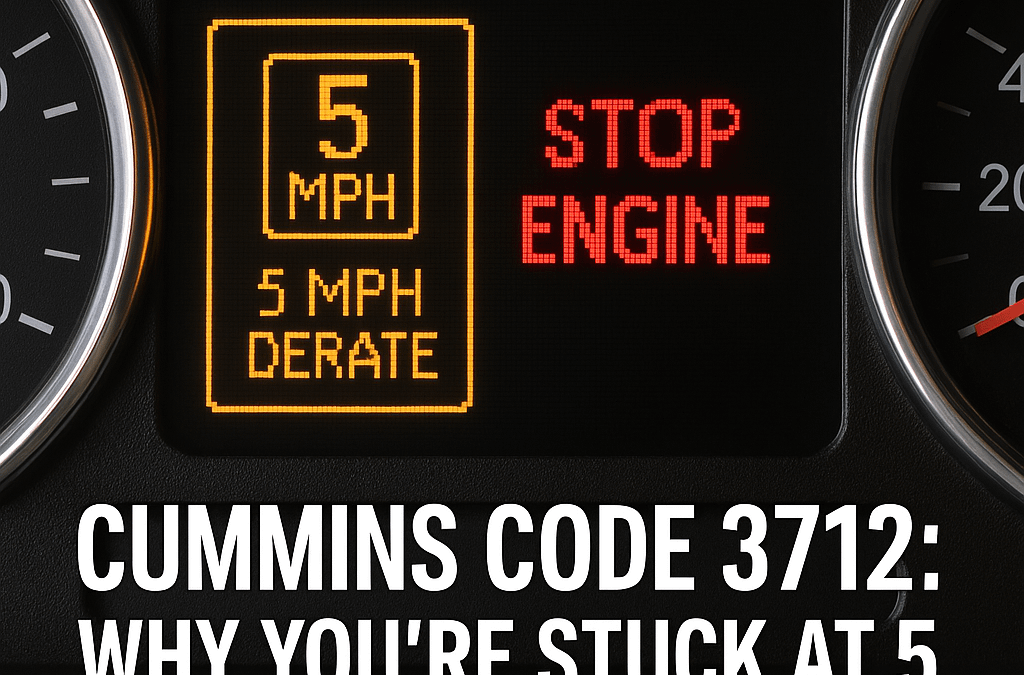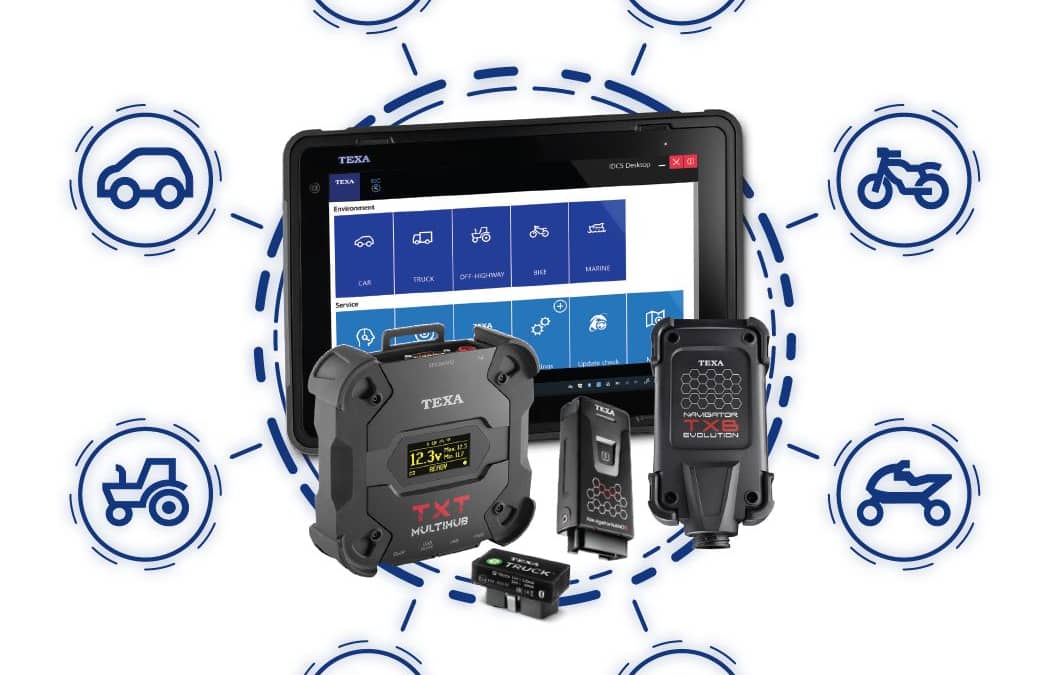
If you’re running Texa diagnostic tools, you’re already a step ahead of the curve. Whether you’re servicing heavy-duty trucks, marine engines, agriculture equipment, or powersports vehicles — Texa gives you powerful insight and control over complex systems. But here’s the catch: your Texa subscription is more than just software updates — it’s the key to maintaining your unlimited warranty.
At Defy Diagnostics, we help customers renew their subscriptions every day, and we see what happens when that renewal gets delayed. Let’s break down why staying current with your TEXA subscription is absolutely essential.
What Does a TEXA Subscription Include?
Your TEXA subscription unlocks the full value of your diagnostic investment, including:
- Regular software updates with the latest coverage and OEM-level capabilities
- Unlimited technical support for troubleshooting and guidance
- Warranty protection that lasts indefinitely — as long as your subscription stays active
This isn’t just a software license — it’s peace of mind that your tool will keep evolving with the vehicles you service.
The Danger of Letting Your Subscription Expire
One of the most common issues we see? Shops and technicians accidentally let their subscription lapse — even just for a few months — and lose their unlimited warranty status. Here’s what that means:
- Warranty becomes void. Even if your tool is just a few years old, a gap in your subscription can disqualify it from future warranty service.
- No more updates. Without current software, your diagnostics may miss newer vehicle systems or throw false codes.
- Support access is limited. You’ll lose direct access to technical support teams trained specifically on TEXA.
The Simple Solution: Renew with Defy Diagnostics
Renewing your Texa subscription with Defy Diagnostics is fast and hassle-free. Defy Diagnostics is an authorized Texa partner, and we gaurantee:
- Lowest price on official TEXA subscription renewals
- No hidden fees, ever — what you see is what you pay
- Fast processing and activation
- Expert support from a U.S. based team
Click here to renew your TEXA subscription now.
Even if your subscription has already lapsed, we can help evaluate your options and get you back on track.
Don’t Risk Losing Your Unlimited Warranty
TEXA’s unlimited warranty is a huge value, but it’s only available if you stay subscribed. Missing a renewal could mean the difference between a quick fix and a costly replacement. Protect your investment — and your uptime — by renewing today.
Need Help or Have Questions?
Defy Diagnostics is here to help you every step of the way. Call us, message us, or email for expert help with TEXA subscriptions, renewals, or product support.

Here’s What Code 3712 Means — and How to Fix It Fast
If you’ve ever had a Freightliner Cascadia, Kenworth T680, or Peterbilt 579 crawl into the shop stuck at 5 mph, chances are you’ve seen Cummins Fault Code 3712 staring you in the face. This one isn’t just a random check engine light — it’s an SCR inducement event tied to SPN 5246 FMI 0, and it means the system has had enough. Once this hits, you’re dealing with an emissions-related shutdown designed to force immediate repair.
Whether it’s an ISX15 in a long-haul tractor, a B6.7 in a Blue Bird Vision bus, or a QSX15 in a CAT 390 excavator, this fault code carries the same message: Your aftertreatment system is in critical condition — fix it now, or you’re parked.
Let’s break down what causes it, how to troubleshoot it properly, and why having the right diagnostic gear — like TEXA’s Axone Voice, Multihub 2, or the remote-capable TEXA eTRUCK — can make all the difference when time is money.
What Is Cummins Fault Code 3712?
This fault appears as SPN 5246 FMI 0, officially labeled “Aftertreatment SCR Operator Inducement – Most Severe Level.” It’s not a standalone fault — it’s triggered by other active, critical SCR-related codes. Think of it as the system’s way of saying: you’ve had your warnings, now you’re getting derated.
Which Engines and Vehicles Are Affected?
This fault code impacts a wide range of Cummins engines, including:
- ISX15 / X15 – Freightliner Cascadia, Kenworth T880, Peterbilt 389
- B6.7 / ISB – Blue Bird Vision, Thomas Built buses, delivery vehicles
- ISL9 / ISC8.3 – International MV Series, vocational trucks
- QSX15 – Off-highway equipment like excavators, generators, mining rigs
What Triggers Fault Code 3712?
While the root cause varies, here are the most common culprits:
- Malfunctioning inlet or outlet NOx sensors (especially if they can’t reach operating temp)
- DEF dosing valve or pump failure due to contamination or crystal buildup
- SCR catalyst degradation from long-term exposure or fluid contamination
- Poor DEF quality (outside 31–34% range) or freezing/crystallization issues
- Wiring or ECM calibration issues impacting communication with aftertreatment system
Field Diagnosis: How the Pros Approach It
Step one: confirm that 3712 is paired with one or more actionable SCR-related codes. Then follow this basic workflow using professional-grade diagnostics:
- Scan with TEXA Axone Voice + Multihub 2 — pull active codes, view live data, and confirm calibration
- Inspect NOx sensor temps — 250°F+ for inlet, 450°F+ for outlet
- Visually inspect DEF lines for leaks, crystal deposits, and pressure issues
- Run dosing valve and SCR conversion efficiency tests using TEXA IDC6 software
Need fast regen access and live fault monitoring without rolling a truck? TEXA’s eTRUCK lets you monitor, diagnose, and even perform remote regens — ideal for fleets with Cummins-powered assets on the road.
Repair Procedures and Best Practices
Once you’ve confirmed the cause, here’s what usually comes next:
- Replace faulty NOx sensors and verify calibration
- Service or replace DEF dosing unit and clean tank if needed
- Replace SCR catalyst if efficiency is below threshold
- Flush DEF system and update ECM calibration
Once repairs are complete, use TEXA tools to run SCR efficiency tests, confirm sensor readings, and ensure fault codes clear properly before release.
Preventive Maintenance to Avoid Code 3712
- Test DEF quality monthly and replace fluid regularly
- Keep up with SCR catalyst efficiency testing
- Inspect NOx sensors and wiring every 90 days
- Update ECM calibrations regularly (Cummins typically releases updates every 6–8 weeks)
Stay Ahead of the Next Breakdown
At Defy Diagnostics, we’re here to keep your fleet running and your downtime to a minimum.
Sign up for our free newsletter and get:
- Pro diagnostic tips like this one
- Exclusive offers on TEXA tools and accessories
- Updates on IDC6 software features and releases
- Field-tested repair strategies you can trust
Sign up now and keep your shop one step ahead.

Detect AC Leaks with Confidence: Why the TEXA Forming Gas Kit Belongs in Your Shop
When it comes to A/C system diagnostics, guesswork is not an option. Whether you’re servicing a vehicle after a collision repair or troubleshooting a drop in cooling performance, identifying leaks quickly and precisely is critical — both for customer satisfaction and your bottom line.
That’s where the TEXA Forming Gas Kit with H₂ Detect comes in.
Tackle Micro Leaks Other Tools Miss
Traditional methods like nitrogen pressure testing or UV dye can leave you with more questions than answers:
- Nitrogen alone may show a pressure drop — but not the leak location.
- UV dye requires time, extra flushing, and often doesn’t pinpoint small or fast-dissipating leaks.
With TEXA’s Forming Gas Kit, you inject a 95% nitrogen / 5% hydrogen gas mixture into the system. Then, using the H₂ Detect sniffer, you can zero in on even the tiniest hydrogen molecule escaping — with visual and audible alerts that guide you directly to the leak source.
Hydrogen is the lightest, smallest molecule — making it ideal for tracking micro leaks in systems using R134a, R1234yf, or R744 (CO₂).
Built for Collision Repair & High-Precision A/C Service
If you’re recharging A/C systems without leak verification, you’re playing a risky game. Collision repairs often disrupt seals or lines — and the last thing your shop needs is a comeback. TEXA’s forming gas method:
- Meets Daimler AG requirements
- Is non-polluting and safe to use
- Works across multiple refrigerant types
- Detects even hard-to-find slow leaks before the system is recharged
What’s in the Kit?
Forming Gas Cart TTF 700
- Compatible with R134a, R1234yf, R744
- Max pressure: 100 bar
- Service hoses for all refrigerants
- Safety valve, pressure reducer, manometer
- Secure tank storage (tank not included)
Forming Gas Case
- Adapters, reducer, evacuation valve
- Teflon seals
- Connection kit for Konfort A/C machines
H₂ Detect Sniffer
- Measures hydrogen from 0 to 2000 ppm
- 14-second response time
- Visual and acoustic feedback
- 6-hour battery life
- Flexible probe for hard-to-reach areas
Who’s It For?
Whether you’re a:
- Collision center needing OEM-approved diagnostics
- Independent repair shop handling A/C complaints
- Dealer staying ahead of new refrigerant standards
- Mobile technician chasing down tough leaks
The TEXA Forming Gas Kit gives you the confidence to diagnose accurately — and avoid repeat repairs.
Need Help Getting Started?
Our team is here to help you integrate leak detection into your A/C service process. Need help pairing the kit with your Konfort 760 Touch or 780 Touch? Just ask.
📞 Talk to a Pro at Defy Diagnostics today.

Introduction
Are you tired of juggling multiple scan tools that only do half the job? Or worse—paying steep dealer prices just to reset a warning light?
From diesel fleets to sport bikes, marine engines to modern cars, today’s vehicles demand smart, flexible diagnostics. And if you’re a shop owner, fleet tech, or mobile mechanic, using outdated or brand-specific tools can cost you time, money, and clients.
This all-in-one mega-guide will walk you through TEXA’s diagnostic ecosystem—why it’s trusted worldwide, how to choose the right platform for your industry, and what tools give you the best return on investment.
We’ll break it down by sector—heavy-duty, automotive, marine, and Powersports—so you can skip straight to what matters most. You’ll get real-world recommendations, FAQs, and internal links to explore each product in depth.
🔧 Why TEXA? A Diagnostic Powerhouse Built for Technicians
TEXA diagnostic tools are built by engineers who actually listen to technicians. Their IDC6 software isn’t just user-friendly—it’s technician-smart, covering more makes and systems across industries than almost any competitor.
Over 100,000 workshops in 130+ countries use TEXA with 15+ years of diagnostic innovation.
Real-World Story: A shop in Georgia upgraded to a TEXA Axone Voice and cut vehicle downtime by 43% in the first quarter—just by gaining instant access to deeper, multi-brand diagnostics.
Pro Tip: If you service a mix of vehicles, TEXA’s cross-platform licensing means you can handle more jobs with one investment.
🚛 Heavy-Duty Diagnostics – Built for Fleets, Mobile Techs & Diesel Shops
Whether you’re diagnosing a Cummins ISX, resetting an SCR on a Volvo, or calibrating a Freightliner’s ADAS system, TEXA’s truck kits deliver OEM-level access without OEM headaches.
- Choose your platform: Axone Voice, Axone Plus, or PC-based
- Pair with Navigator TXT Multihub
- Install IDC6 Truck software
- Begin diagnostics across Freightliner, Kenworth, Mack, International, and more
Avoid This: Don’t expect regen features from basic readers—only pro tools offer full bi-directional support.
→ Deluxe Fleet Diagnostic Package
🚗 Automotive Diagnostics – Smarter Scans for Modern Cars
With deep European & Asian brand coverage, TEXA’s IDC6 Car software enables ADAS calibration, bi-directional testing, resets, and programming.
Recommended Kits:
- Axone Plus + Navigator Multihub
- Axone Voice
Case Study: A garage in NC eliminated 90% of Audi/BMW sublets with TEXA.
Tool Tip: Add RCCS3 Evo for in-house ADAS calibration.
→ RCCS3 ADAS Calibration System
🛥️ Marine Diagnostics – Plug into Outboards, Inboards & Jet Skis
TEXA’s marine software works with Mercury, Yamaha, Suzuki, Volvo Penta & more. Diagnose trim, ignition, fuel systems—on water or off.
- Axone Nemo Light or Axone Plus
- Marine software license
- OEM-specific cable kits
Supports Jet Skis (Sea-Doo, Yamaha, Kawasaki) and older marine engines.
→ TEXA Marine Kits
🏍️ Motorcycle & Powersports Diagnostics – From Dirt to Drag
TEXA covers Harley, Honda, Ducati, Polaris, Yamaha, KTM, BRP, ATVs, UTVs, and more.
Top Picks:
- Axone Light Bike Kit w/ Cables
- Axone Nemo Light
- Axone Voice Bike Kit
→ TEXA Bike Diagnostic Kits
📌 Key Takeaways
- ✅ TEXA spans trucks, cars, boats & bikes
- ✅ IDC6 gives you OEM-level access
- ✅ Smart bundles = less dealership reliance
- ✅ Start with your needs, not just price
Conclusion
If you’re tired of outgrowing scan tools or being tied to dealerships, TEXA’s ecosystem is the upgrade your shop needs. Diagnose more. Downtime less.
Next Step: Browse the category that fits you or Talk to a Pro.
Question: Which vehicles do you service most—and what’s holding you back from upgrading diagnostics?
🔗 Explore More
Newsletter CTA: Join our free newsletter

Introduction
Imagine a Tesla model S rolls silently into your shop with an ambiguous dashboard warning. Your team, seasoned in internal combustion quirks, now stares down a 400-volt battery pack, regenerative braking systems, and a maze of digital controllers — and your old OBD-II scanner? Useless.
This isn’t a scene from the future. It’s today.
Electric vehicles (EVs) like the Rivian R2, Tesla Model S, and Ford F-150 Lightning are no longer niche players. They make up over 7% of new car sales nationwide—and that number climbs dramatically in forward-looking states like California, Colorado, and New York. These vehicles are now entering the post-warranty market, and shops without the tools to service them are watching six-figure revenue streams drive away.
This blog walks you through how to shift from outdated diagnostics to becoming an EV-ready powerhouse—with real solutions like the TEXA Axone Voice, Multihub, and IDC6 software that are designed for high-voltage, multi-brand service. You’ll also see why adding ADAS calibration capabilities with the RCCS3 system is your strategic edge.
What’s Really Under the Hood of an EV?
Let’s kill the myth that EVs are “simpler” because they don’t have engines. In reality, they replace mechanical complexity with a far more sophisticated electronic ecosystem.
Here’s what you’re actually working with in vehicles like the Tesla Model S or Hyundai Ioniq 6:
- Battery Management Systems (BMS) with hundreds of individual cell monitors
- Redundant thermal cooling systems for power electronics and motors
- Regenerative braking modules talking to both hydraulic and electronic systems
- High-voltage isolation circuits and contactor diagnostics
- Dozens of ECUs communicating on multiple protocols (CAN, LIN, CAN-FD, and even Ethernet)
⚡️ Case in Point: A EV with a charging fault recently stumped a local shop for three days—until they upgraded to the TEXA Axone Voice + Multihub system. Within 30 minutes, the IDC6 software identified a failed HVIL (High Voltage Interlock Loop) sensor. Total fix time: 90 minutes. ROI? Immediate.
These aren’t repairs you can guess your way through. EV diagnostics requires purpose-built tools and protocols—especially as more brands adopt over-the-air updates, encrypted modules, and proprietary communication channels.
EV Diagnostics = Profit Center
EV diagnostic work isn’t just necessary—it’s one of the most profitable service segments in the industry.
Independent shops using advanced scanners like TEXA report charging $150–$200/hour for EV diagnostic labor, which often requires less wrench-turning and more precision. With tools like the Axone Voice, technicians can pull in-depth module data, perform calibrations, and run health checks across brands like Lucid, Nissan, and Mercedes-Benz EQ models.
Revenue Drivers:
- Battery Health Pre-Purchase Inspections (Tesla Model Y): $250–$400
- Out-of-Warranty Diagnostics (Nissan Leaf, Kia EV6): High-margin, low-comeback
- Fleet EV Services (Ford E-Transit, Amazon Rivian Vans): Recurring revenue
- Performance Optimization: Diagnostics for range, regen tuning, and software updates
Shops using IDC6 software with TEXA tools report 25% higher average repair order values for EVs compared to ICE vehicles.
Your EV Diagnostic Toolkit
Here’s the blueprint to get your shop EV-ready without overextending.
💡 Start with These:
- TEXA Axone Voice Tablet + Multihub – Multi-brand, bi-directional EV diagnostics, including Tesla, Rivian, BMW i-Series, and more
- IDC6 Software – EV-specific database, live data from HV systems, ECU resets, service resets, advanced troubleshooting trees
- Insulated PPE & Tools – High-voltage rated equipment for technician safety
- RCCS3 ADAS Calibration Kit – Required for post-collision or module replacement on vehicles like Ford Mach-E and Volkswagen ID.4
Add-ons like high-voltage battery analysis tools and thermal system test kits can come later, but TEXA gets you in the EV game from day one.
Why ADAS Changes the Game
If your shop isn’t calibrating ADAS systems, you’re leaving money—and liability—on the table.
Modern EVs are packed with driver-assist tech: forward radar, 360° cameras, lidar, blind-spot sensors, and more. After any service that affects ride height, suspension, windshield, or bumpers, these systems require recalibration.
That’s where the TEXA RCCS3 comes in.
It allows you to recalibrate radar and camera systems with OEM precision. Whether it’s a Tesla Model S camera realignment after a windshield replacement or a radar recalibration post-bumper repair—you’re covered.
The Real Future? Preventative EV Diagnostics
The most forward-thinking shops aren’t just fixing issues—they’re preventing them.
Using IDC6 software and TEXA tools, shops can track degradation patterns, analyze charging history, and proactively address range complaints—turning “diagnostics” into high-ticket EV wellness checks.
Fleet operators? They’ll love you for it. Predictive diagnostics mean less downtime and more uptime for last-mile delivery units and EV service fleets.
KEY TAKEAWAYS
✅ EV diagnostic work demands premium pricing—and it’s worth it
✅ Tools like the TEXA Axone Voice + Multihub with IDC6 give you full control
✅ EVs like the Tesla Model S require specialized support today—not “someday”
✅ ADAS calibrations (via RCCS3) will be required for nearly every EV repair moving forward
✅ Shops that wait will fall behind; shops that invest now will lead their market





